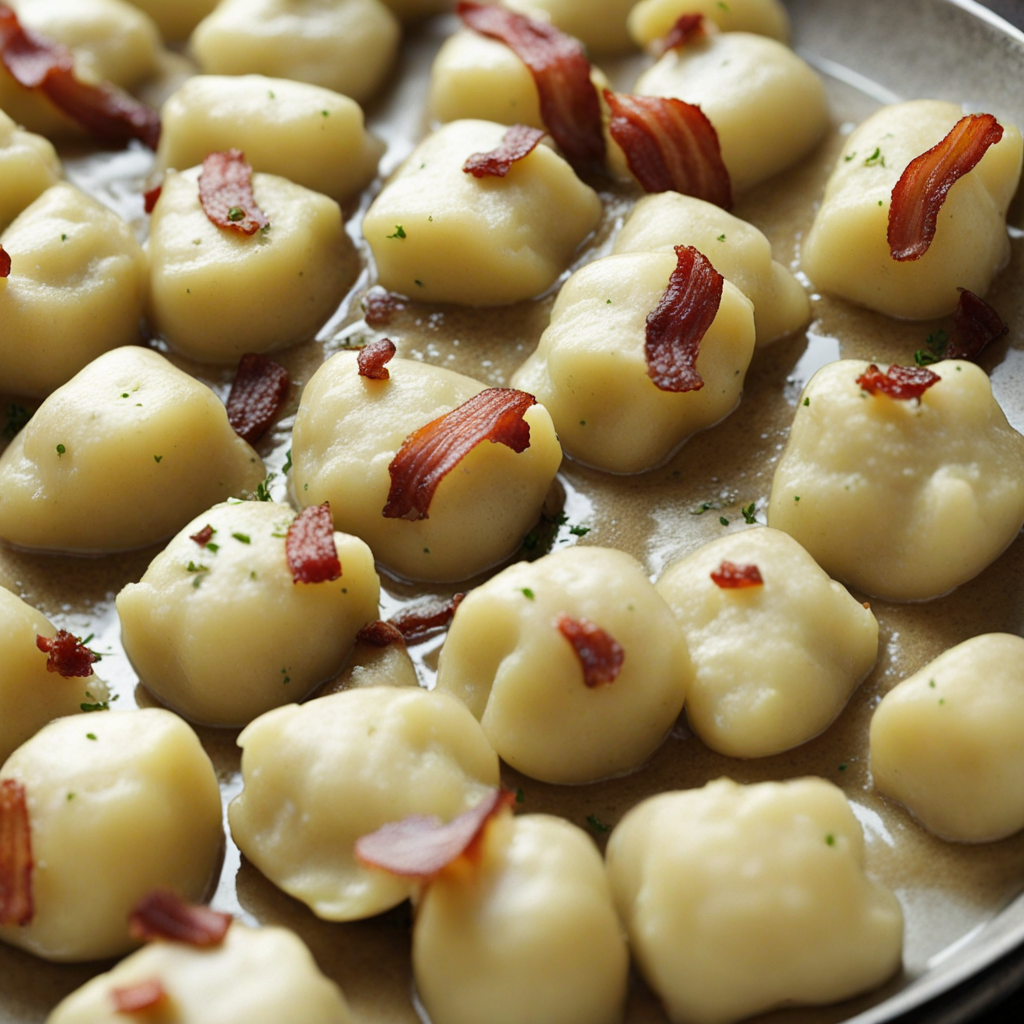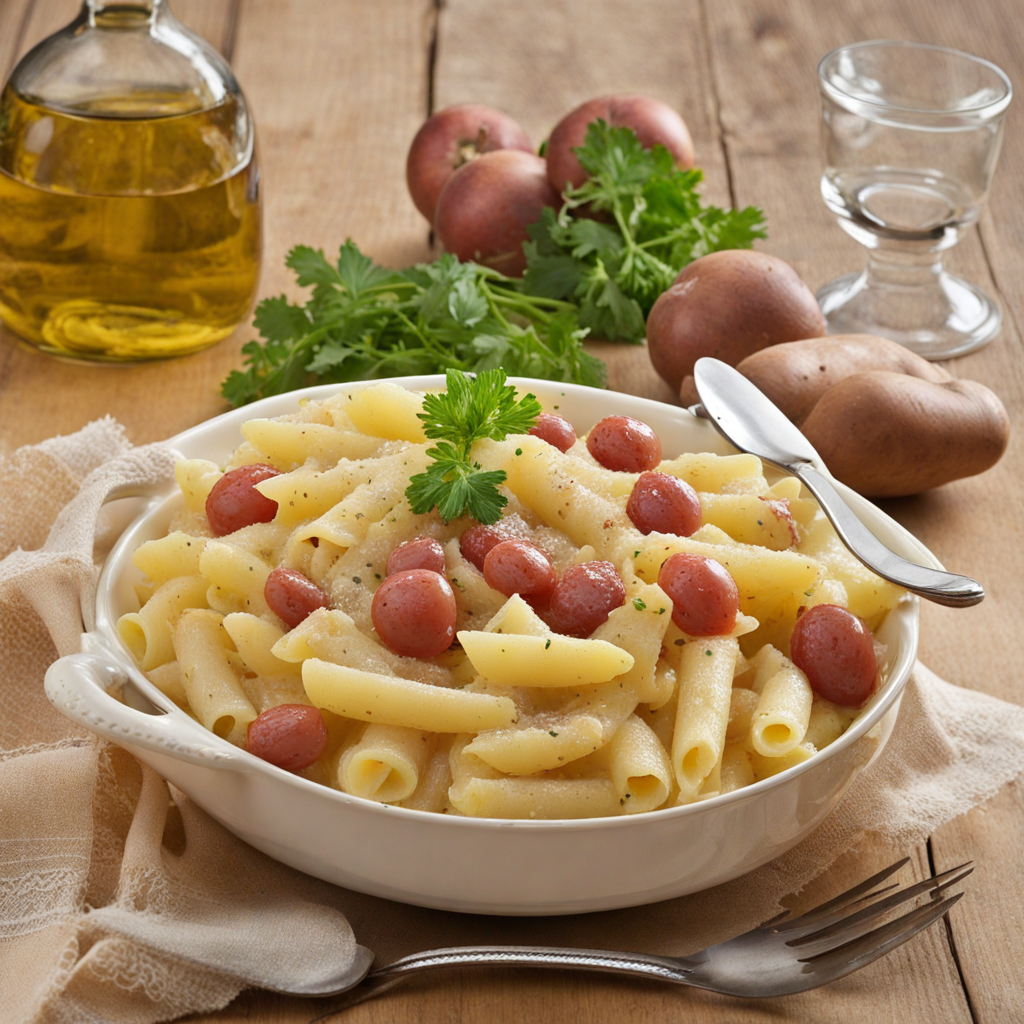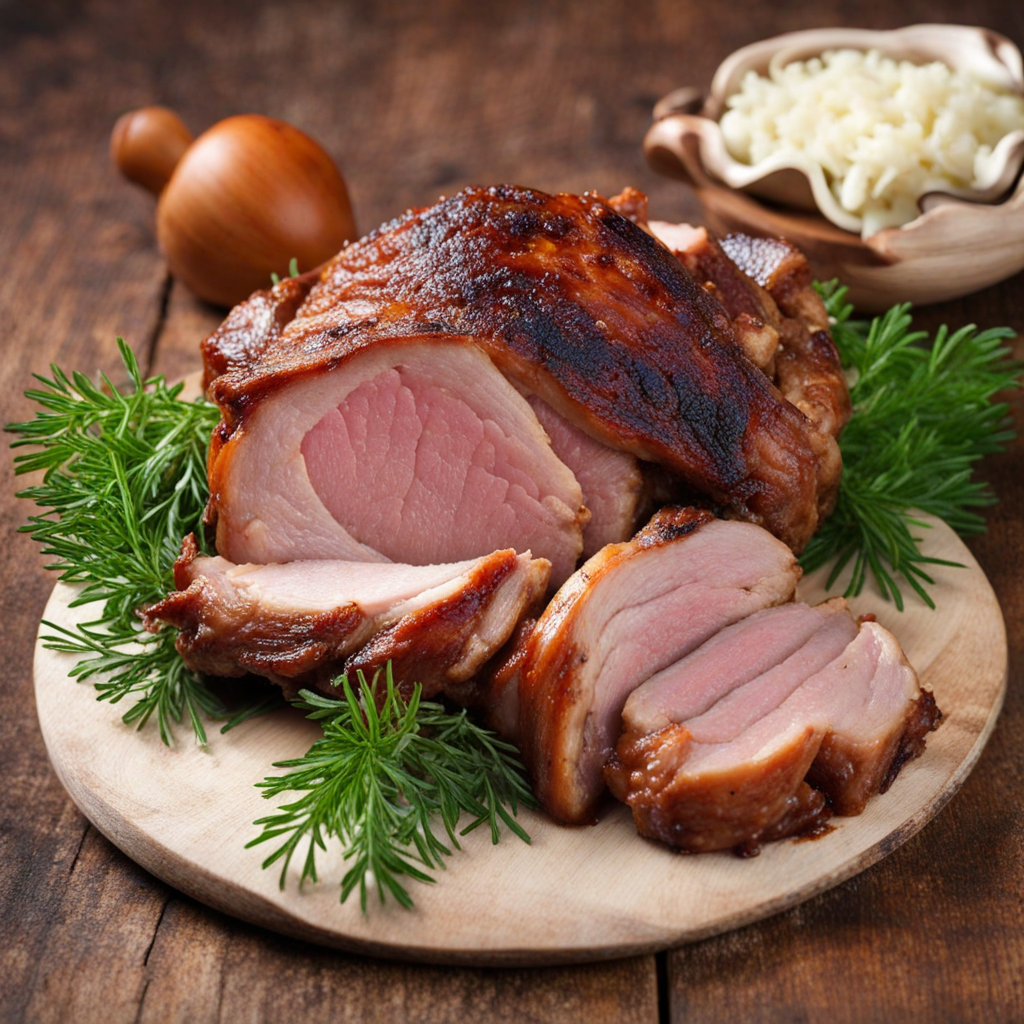Bryndzové Halušky
Bryndzové Halušky is a traditional Slovak dish that beautifully showcases the rich flavors and textures of the region's culinary heritage. At its core, this dish consists of soft potato dumplings, known as halušky, which are made from a simple mixture of grated potatoes, flour, and salt. The dumplings are rolled into small, bite-sized pieces and then boiled until they float to the surface, indicating they're perfectly cooked. Their tender, pillowy consistency provides a welcoming base for the flavorful toppings that follow. What truly sets Bryndzové Halušky apart is the use of bryndza, a unique Slovak sheep cheese that is both creamy and tangy. This cheese is made from the milk of local sheep and has a distinct flavor profile that adds depth and richness to the dish. Once the halušky are cooked, they are generously tossed with melted bryndza, allowing the cheese to coat the dumplings and infuse them with its savory essence. The combination of the soft dumplings and the creamy cheese creates a delightful contrast that is both satisfying and indulgent. To elevate the dish further, crispy bacon or smoked meat is often sprinkled on top, adding a smoky, salty crunch that complements the creamy cheese and soft dumplings. This perfect balance of flavors and textures makes Bryndzové Halušky not only a comforting meal but also a representation of Slovak culture and tradition. Each bite offers a taste of Slovakia's pastoral landscapes and culinary craftsmanship, making it a must-try for anyone looking to explore new and exciting flavors.
How It Became This Dish
The History of Bryndzové Halušky: A Culinary Gem of Slovakia Origins and Early History Bryndzové halušky is a traditional Slovak dish that beautifully embodies the country’s cultural heritage and culinary evolution. Its origins can be traced back to the mountainous regions of Slovakia, where sheep farming and dairy production were integral to rural life. The name "halušky" refers to a specific type of dumpling made from potato and flour, while "bryndza" is a soft cheese made from sheep's milk, renowned for its distinct flavor and creamy texture. Historical records suggest that the preparation of halušky dates back to at least the 18th century, although similar dumpling-like foods can be found in various forms throughout Central and Eastern Europe. In Slovakia, the use of potatoes in halušky became prevalent in the 19th century, coinciding with the introduction of the vegetable to the region. The dish is often linked to the peasant population who created simple, hearty meals from the ingredients available in their surroundings. Cultural Significance Bryndzové halušky holds a special place in Slovak culture, transcending mere sustenance to become a symbol of national identity and pride. The dish is often prepared for special occasions, family gatherings, and festivals, serving as a bridge between generations. It is commonly associated with traditional Slovak hospitality, where sharing a meal of bryndzové halušky signifies warmth and community. In Slovakia, the dish is regarded as the national meal, a status cemented by its inclusion in various culinary festivals and competitions. The Slovak National Council even declared it the “National Dish of Slovakia” in 2008, a nod to its importance in the country’s gastronomic heritage. The preparation of bryndzové halušky is often a communal activity, where families gather to make the dumplings together. This process fosters bonds and creates a sense of belonging, as stories and traditions are passed down through the generations. The dish is also celebrated in literature and folklore, further embedding it into the Slovak cultural fabric. The Development of Bryndzové Halušky Over Time The evolution of bryndzové halušky reflects broader societal changes in Slovakia. During the Austro-Hungarian Empire, the culinary landscape was influenced by various cultures, leading to the incorporation of spices and techniques that enriched the traditional dish. As Slovakia gained independence in 1918, a renewed sense of national identity was reflected in the culinary arts, with a focus on local ingredients and traditional recipes. The post-World War II era saw significant changes in agricultural practices, with an increase in industrialization and urbanization. This impacted food production and consumption patterns, leading to the emergence of pre-packaged foods and convenience meals. However, despite these shifts, bryndzové halušky remained a beloved comfort food, cherished for its simplicity and nostalgic value. In the late 20th century, as Slovakia transitioned to a market economy, there was a resurgence of interest in traditional foodways. Food enthusiasts and chefs began to explore and promote authentic Slovak cuisine, often incorporating modern twists while maintaining the essence of traditional recipes. This renaissance has led to the emergence of various interpretations of bryndzové halušky, with some chefs experimenting with different types of cheese, flavors, and garnishes. Today, bryndzové halušky is often served with toppings such as crispy fried onions, bacon, or herbs, adding depth and complexity to the dish. The global interest in ethnic cuisines has also allowed Slovak food, including bryndzové halušky, to find its way onto international menus, raising awareness of Slovakia’s culinary treasures. Regional Variations and Modern Adaptations While the classic version of bryndzové halušky features potatoes, flour, and bryndza, regional variations exist that reflect local tastes and available ingredients. In some parts of Slovakia, different types of cheese, such as cow's milk cheese, may be used, while others might incorporate various herbs or spices to enhance the flavor profile. Moreover, modern adaptations have emerged in response to dietary preferences and restrictions. Vegetarian and vegan versions of bryndzové halušky have gained popularity, utilizing plant-based cheeses or alternative ingredients to create lighter, healthier versions of the dish. The dish's versatility allows it to be served in various settings, from family dinners to upscale restaurants. While traditional recipes are revered, many chefs are continually innovating, creating unique presentations that respect the dish's heritage while appealing to contemporary palates. Conclusion: A Dish That Unites Bryndzové halušky is more than just a meal; it is a testament to Slovakia’s rich culinary history and cultural identity. Its humble beginnings as a peasant food have transformed it into a national symbol, celebrated for its simplicity, flavor, and the sense of community it fosters. As Slovakia continues to embrace its gastronomic heritage while adapting to modern culinary trends, bryndzové halušky remains a beloved dish that unites families and friends around the table, telling the story of a nation through its food. In a world that increasingly values authenticity and tradition, bryndzové halušky stands as a shining example of how food can transcend time and place, creating connections and preserving cultural narratives. Whether enjoyed in a rustic mountain village or a bustling urban center, this Slovak delicacy will continue to nourish both body and soul for generations to come.
You may like
Discover local flavors from Slovakia







